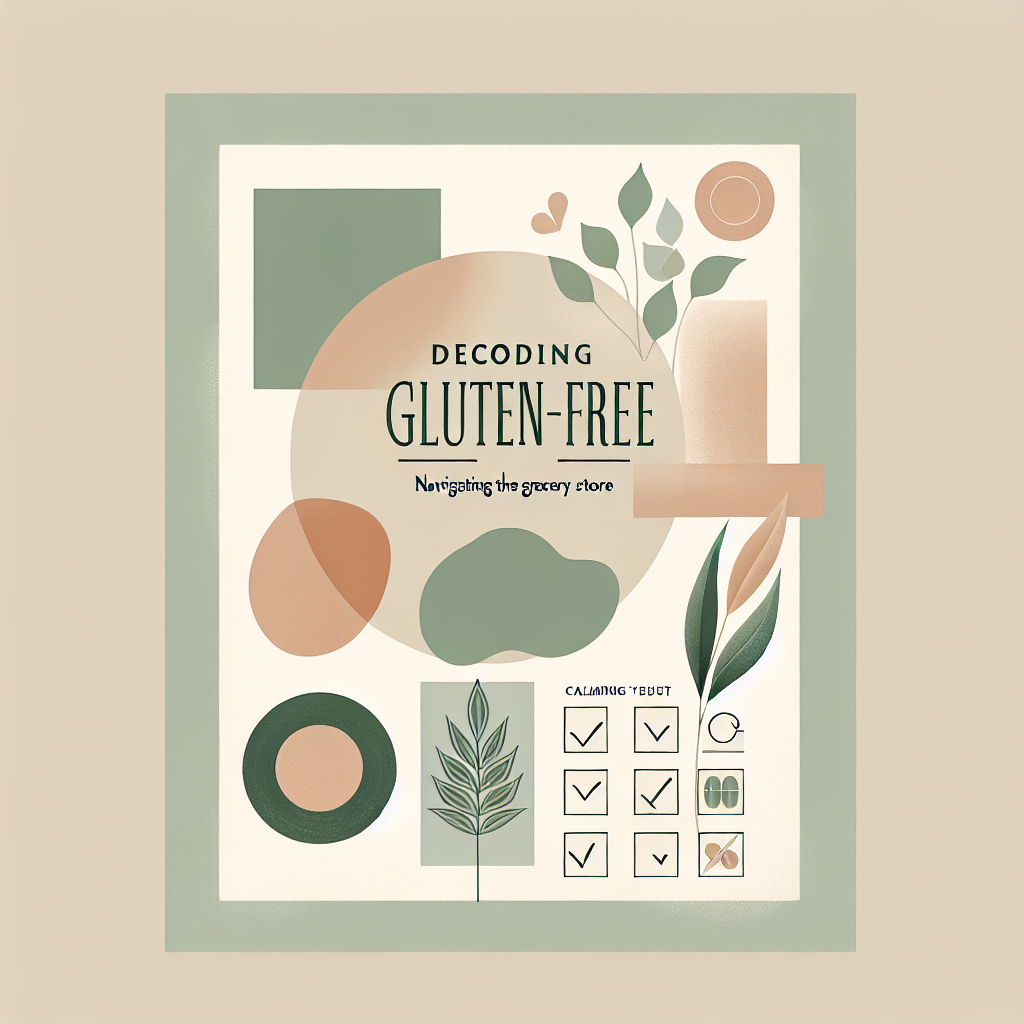Navigating the bustling aisles of your local grocery store, with shelves stacked high with a plethora of food products, can be a daunting experience, especially when you’re committed to a gluten-free lifestyle. Deciphering food labels, trying to understand the fine print, and avoiding cross-contaminated items, can sometimes seem like trying to crack hieroglyphics. But don’t fret, fellow gluten-free friend. I’m here to simplify the task for you.
Let’s start off with a mini trip down memory lane. I remember my initial grocery run, post my gluten-free commitment. My list was a mile long and so was my nervousness. I questioned everything in my cart, reading and rereading the labels like I was studying for an ultimate gluten-free test. Looking back at those days, I smile at the over-eagerness of my beginner self. The past few years of my gluten-free journey have taught me so much about label reading, ingredient hunting and trust-building with gluten-free food brands. Today, I’m going to share what I’ve learned.
Let’s start at the beginning — with ingredients.
While it’s safe to assume that products marked ‘gluten-free’ are indeed free from gluten, not every gluten-free product carries such a label. Those are the ones we need to be watchful for. When I say ‘watchful’, it doesn’t mean you have to sweat buckets, searching high and low for invisible gluten particles. Instead, just keep an eye out for common gluten-containing ingredients like wheat, barley, rye, malt, brewer’s yeast, and oats (unless specified gluten-free). I have [previously discussed](#) in detail about these hidden culprits that could mess with your gluten-free mission.
Many packaged foods, ranging from frozen vegetables to pre-packaged salads may include sauces or seasoning mixes that contain hidden sources of gluten. This is where a careful reading of the ingredients list comes in. Products may not spell out ‘gluten’ explicitly but mentioning ‘wheat’, ‘barley’, ‘rye’ or their derivatives is a telltale giveaway.
Another trick is to understand the language of food labels. ‘Gluten-free’ means the product is free from gluten ingredients and has been tested to meet gluten-free standards. However, ‘no gluten-containing ingredients’ means the product doesn’t contain any gluten ingredients, but it hasn’t been tested for gluten cross-contamination.
Now, let’s talk about products labeled ‘Certified Gluten-Free’. This can indeed be a guiding light for all of us trying to navigate through the fog of inconsistent labelling. This badge essentially means that the product has met stringent standards and has passed tests confirming it to be free of gluten. Trust me, spotting this label on any product feels like finding a hidden treasure in a dense jungle.
Considering that even the tiniest bit of gluten can trigger symptoms, it’s best to be aware of possible cross-contaminations too. If you are extra sensitive to gluten or have celiac disease, it’s best to choose products that are manufactured in a dedicated gluten-free facility. I have delved deeper into [gluten cross-contaminations](#) in one of my previous blogs. Do give it a read for an in-depth understanding.
When it comes to fresh produce and raw ingredients, they are naturally gluten-free. The challenge however might be in the thorough washing and cooking of these ingredients in a gluten-free kitchen environment to avoid cross-contamination.
Also, here’s a quick tip for when you’re walking down those store aisles: stick to the outer edges of your grocery store layout. The fresh fruits, vegetables, meat, and dairy are usually placed along the edges while the pre-packaged foods lurk in the middle. Planning your grocery trip beforehand can save you from potential gluten traps and also time at the store.
Over time, you’ll find your go-to brands and products that make gluten-free living easier and even delightful. Be patient with yourself and don’t let those confusing labels get to you. With time, these tips will become ingrained, just like the gluten you’re trying so hard to avoid. The grocery store, with all its shelves stacked high, will no longer appear as a daunting labyrinth, but rather a treasure trove full of healthy, gluten-free foods waiting to be discovered.
To make your grocery trips even easier, I am planning to publish a series of gluten-free product recommendations, covering everything from breads to chocolates. Stay tuned!
Remember, knowledge is power. Now that you are equipped with these tips, carry that power with you on your next trip to the grocery store. Don’t forget to wear your smile along with that apron because, dear friend, gluten-free doesn’t mean joy-free.
So, until our next gluten-free talk, stay happy, stay gluten-free!
**Category: Educational Guides**


